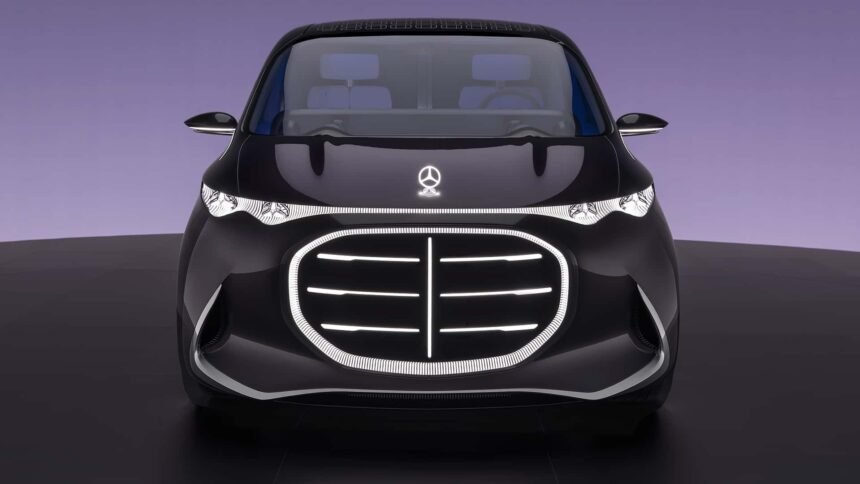Mercedes is embarking on a new design journey, inspired by BMW’s unified styling approach. The iconic three-pointed star will now share a common design language across its diverse range of vehicles, including gas, diesel, plug-in hybrid, and fully electric models. This means that future Mercedes models, whether they run on traditional fuel or electricity, will bear a striking resemblance to each other. Just like the current electric CLA closely resembles its gas-powered counterpart, upcoming models like the EQS will be styled akin to an electric version of the S-Class, creating a cohesive design identity throughout the lineup.
The Vision V concept, recently unveiled by Mercedes, serves as a preview of the brand’s new design philosophy. According to Mercedes’ design chief, Gorden Wagener, the future models will convey a message of “respect” to their owners. Wagener elaborated that these cars will symbolize success and deserving of respect, catering to individuals who have achieved something in life. The Vision V concept, with its bold and luxurious design, is described as “damn sexy” and is said to be very close to production. The concept’s radical front fascia is believed to exude status and respect, although such features on show cars are often exaggerated for attention-grabbing purposes.
Styling cues from the Vision V concept will influence forthcoming production models, with a particular emphasis on the corporate grille. Mercedes aims to enhance the visual impact of the grille by refining its shape and inner design, without necessarily increasing its size. While SUVs and vans like the Vision V can accommodate larger grilles due to their tall front ends, sedans and coupes are expected to adopt more subtle and elegant designs.
Wagener argues that there’s no longer a need to differentiate between ICE (Internal Combustion Engine) and EV models through distinct exterior styling. While early electric vehicles were designed with futuristic and aerodynamic shapes to stand out and improve efficiency, modern electric cars have become mainstream and can seamlessly blend in with conventional vehicles.
Despite the shift towards electric mobility, Mercedes’ sales data reveals that the majority of customers still prefer combustion engines. In the first quarter of 2025, electric vehicles accounted for less than 10 percent of the brand’s deliveries, with only a small fraction being fully electric. This indicates that while electric cars are becoming more popular, there is still a significant demand for traditional fuel-powered vehicles among Mercedes buyers.
As Mercedes continues to evolve its design language and adapt to the changing automotive landscape, the brand remains committed to delivering innovative, luxurious, and stylish vehicles that cater to the diverse needs and preferences of its discerning customers.







